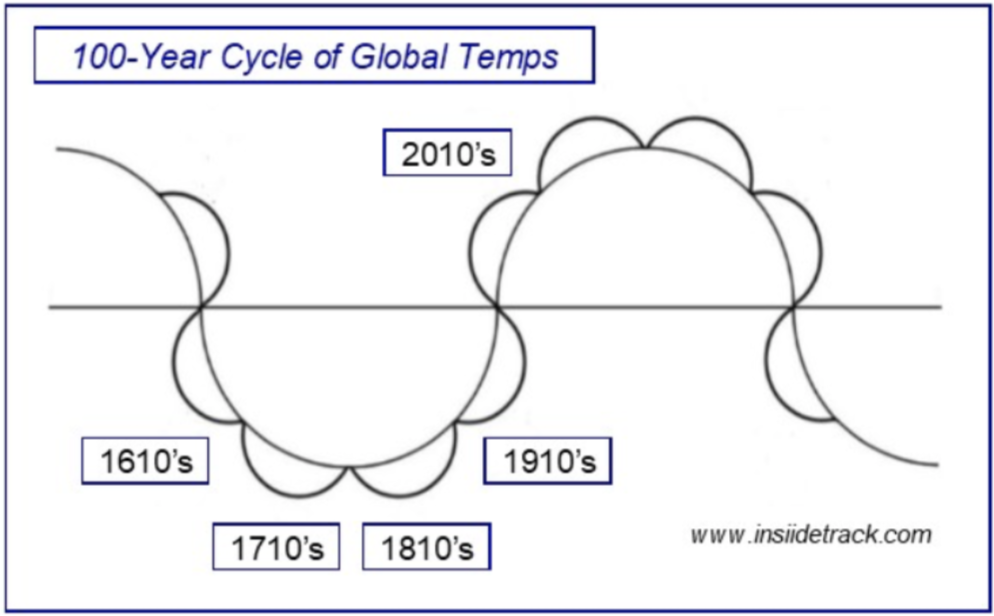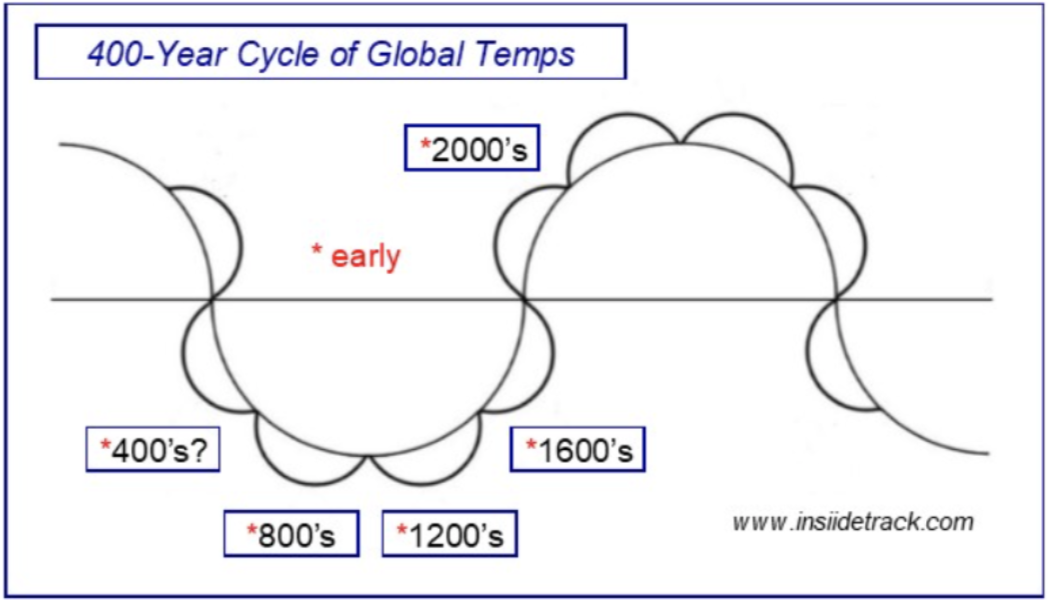Food Crisis Cycles

40YC – Food Crisis Cycles VII
4-04-17 – 2017 is setting up for the ’intensification phase’ of Food Crises Cycles – detailed for several years. Soybeans surged into mid-2016 – completing a 4-Shadow Signal and fulfilling all of the upside objectives (in price AND time) that set the stage for a 6–12 month peak and the onset of a ‘2’ wave correction. That was expected to trigger a pullback and then consolidation until cycles turn convincingly higher in mid-2017.
While Soybeans were entering that congestion phase, Wheat was fulfilling multi-year cycles projecting a Major bottom in 3Q 2016 and the subsequent onset of a Major bull market (similar to the late-1970’s). This has been detailed throughout the past 2–3 years.
As discussed in mid-2016, that expected peak in Soybeans would increase the potential for a mid-2017 low & reversal higher – in line with an uncanny 360-degree cycle. That 12-month cycle timed highs in May–July 2013, 2014, 2015 & 2016 and was/is likely to invert and time a decisive low in May–July 2017. (Related cycles are honing that and focusing on mid-June 2017).

2017–2019 is when the dynamic ‘3rd’ wave advance is expected to take hold in grain markets. That could coincide with a culminating warming spike as multi-decade & multi-century cycles pinpoint the period around 2019/2020 as the convergence of a myriad of climate cycles. This reprint of INSIIDE <u”>Track Food Crisis Cycles’ analysis is published to bring newer readers up to speed on some of what is expected in 2017–2019.
03-30-17
The Natural Year
The onset of the Natural Year (Vernal Equinox) has its roots in agrarian society and the emergence from Winter. And just as every year has its rotation of climate cycles – and every four seasonal cycles comprise each year – climate vacillates on a larger-degree cycle as well. All are forms of ‘climate change’ on different time horizons.
I have previously illustrated the uncanny 40-Year Cycle that projects a crescendo of rising temperatures in the late-2010’s/early-2020’s (40 years from the peak in the late-1970’s/early-1980’s that was 40 years from the peak in the late-1930’s/early-1940’s). But, that is just one factor…
As illustrated on page 2, the 2010’s are also the culmination of rising temperatures on a 100-Year Cycle.

The unique aspect of this Cycle Progression is that the 2010’s represent the inversion – during which the cycle that had previously governed sequential lows (nadir of cold temperatures) is now expected to time highs (peaks in warming).
Here is a quick look at the time frames included in that uncanny Cycle Progression:
1610’s – One of China’s coldest decades in recorded history. It triggered massive famine and, not surprisingly, ushered in a ~40-Year Cycle of declining yields & harvests due to cold in 1610’s, 1630’s & 1650’s (China: An Environmental History by Robert B. Marks).
In additional regions, the 1610’s ushered in a 40-Year period of plummeting temperatures (over 2 degrees F in 40 years) that ultimately ushered in the coldest part of the Little Ice Age (~1645–1715). The first River Thames frost fair took place in 1607 & was quickly followed by the freezing of the Golden Horn and part of Bosphorus in 1622.
1710’s – Culmination of coldest period of Little Ice Age and lowest period of solar activity (1645–1710) in at least the last 400 years.
1810’s – Multiple volcanic eruptions amplifying cooling temps, leading to eruption of Mt. Tambora & ensuing Year Without a Summer. Agricultural ramifications were felt for years & decades to follow.
1910’s – Final dip & low in temperatures as Earth emerged from the Little Ice Age (~1300–1850 AD) and began to thaw.
Just as on a price chart, this ascending low – after three previous lows – projected an accelerated (warming) ~100-year period to follow, leading into a high during the next phase of that 100-Year Cycle Progression (in the late-2010’s). So far, temps have cooperated!
There are even larger cycles that incorporate both the 40-Year Cycle & the 100-Year Cycle AND that powerfully corroborate this focus on the late-2010’s for a culmination of warming. They are the 200-Year & 400-Year Cycles.

The 400-Year Cycle times the swings from the extreme lows of the early-800’s to the initial lows of the early-1200’s to the lows of the early-1600’s to the highs of the early-2000’s. It is all very cyclical.
[The early 800’s & early-1200’s were also cold periods with the early-800’s timing the freezing of the Black Sea & Nile River (physicalgeography.net/fundamentals/7x.html).
The early-1200’s were not nearly as extreme, instead representing an initial low coming off the warm temperatures of the Medieval Warm Period. They were a harbinger of what was to follow, in the ensuing 400 years.]
That 400-Year Cycle of Climate dates back to at least 1,200 BC, the onset of civilization-altering cooling & drought (that lasted hundreds of years by some accounts) and has timed the larger-degree climate shifts on a recurring, 400-year basis.
It is all very cyclical.

Connecting most of these cycles, including the 40-Year Cycle, is also an over-arching 80-Year Cycle of Climate & Food Crises that dates back at least 800 years & also includes times of severe famine (not yet discussed) in the 1530’s, 1690’s, 1770’s… leading to the late-1850’s (Civil War Drought that lasted almost a decade) & late-1930’s (Dust Bowl) and ultimately to the late-2010’s (possibly carrying over into early-2020s). More on this to follow… IT
[End of April 2017 INSIIDE Track excerpt.]
April 2017 – Similar to corresponding analysis for Crude Oil, Gold & Silver and other inflation-related markets, 3Q 2017 could time the next (ascending) low in a 1–2 year bottoming process. That should usher in the next phase of a developing bull market, when the rallies begin to last a little longer, the intervening declines are a little less damaging, and the lows subsequently form at an increasing upward angle. 2018–2019 is when more accelerated advances are likely to unfold.